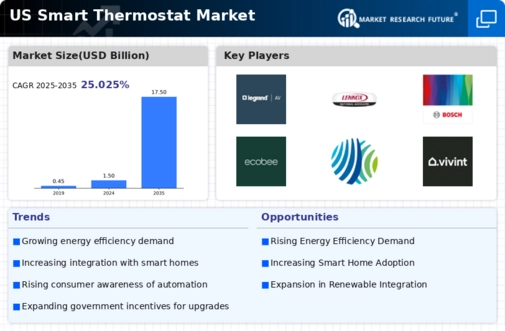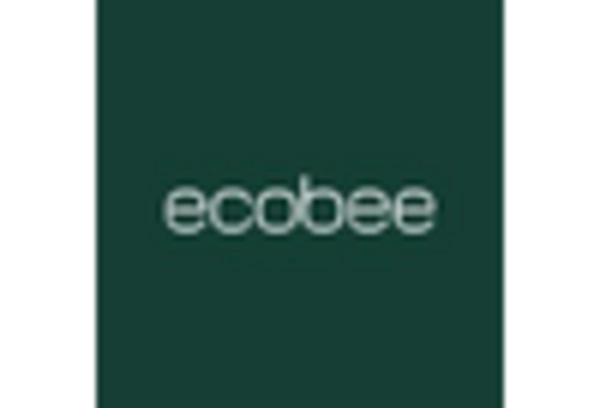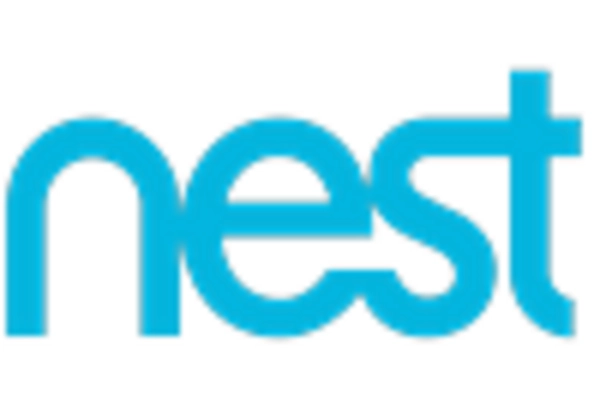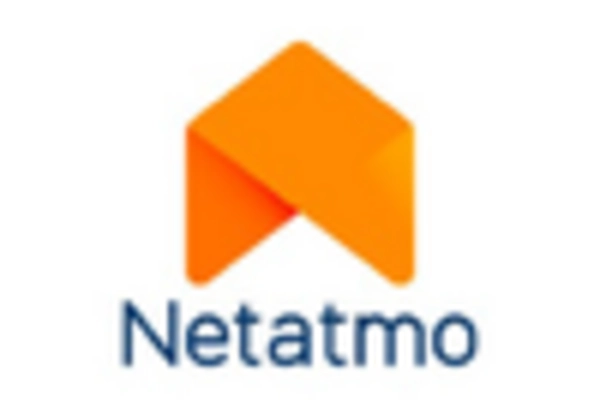The smart thermostat market in the US is characterized by a dynamic competitive landscape, driven by technological advancements and increasing consumer demand for energy efficiency. Major players such as Nest Labs (US), Honeywell (US), and Ecobee (CA) are at the forefront, each adopting distinct strategies to enhance their market positioning. Nest Labs (US) focuses on innovation through continuous product development, while Honeywell (US) emphasizes its extensive distribution network and brand recognition. Ecobee (CA) leverages partnerships with utility companies to promote energy-saving programs, thereby enhancing its market reach. Collectively, these strategies contribute to a competitive environment that is increasingly centered around technological innovation and customer engagement.
Key business tactics within the smart thermostat market include localizing manufacturing and optimizing supply chains to reduce costs and improve responsiveness. The market structure appears moderately fragmented, with several key players holding substantial market shares. This fragmentation allows for a variety of product offerings, catering to diverse consumer preferences. However, the influence of major companies remains significant, as they set industry standards and drive technological advancements that smaller players often follow.
In October 2025, Nest Labs (US) announced the launch of its latest smart thermostat model, which integrates advanced AI capabilities for predictive energy management. This strategic move is likely to enhance user experience by providing personalized heating and cooling schedules, thereby increasing energy savings. The introduction of AI-driven features positions Nest as a leader in innovation, potentially attracting environmentally conscious consumers looking for smarter home solutions.
In September 2025, Honeywell (US) expanded its partnership with a leading energy provider to offer rebates for customers who install its smart thermostats. This initiative not only incentivizes consumers to adopt smart technology but also reinforces Honeywell's commitment to sustainability. By aligning its products with energy-saving programs, Honeywell strengthens its market presence while contributing to broader environmental goals.
In August 2025, Ecobee (CA) launched a new software update that enhances its thermostat's compatibility with various smart home ecosystems. This strategic enhancement is crucial as it allows users to integrate their devices seamlessly, thereby improving customer satisfaction and loyalty. By focusing on interoperability, Ecobee positions itself as a versatile player in the smart home market, appealing to tech-savvy consumers who prioritize connectivity.
As of November 2025, current competitive trends in the smart thermostat market are heavily influenced by digitalization, sustainability, and AI integration. Strategic alliances among key players are shaping the landscape, fostering innovation and enhancing product offerings. The shift from price-based competition to a focus on technological differentiation and supply chain reliability is evident. Companies are likely to continue investing in R&D to develop cutting-edge solutions that meet evolving consumer demands, ensuring that competitive differentiation remains rooted in innovation and sustainability.
















Leave a Comment